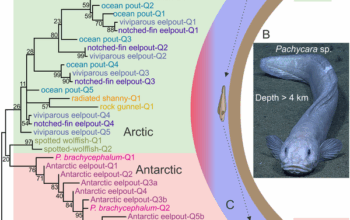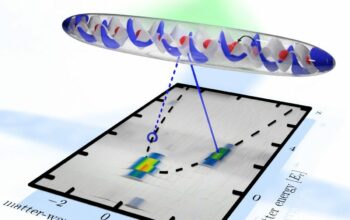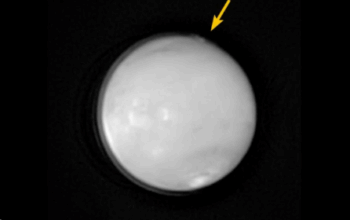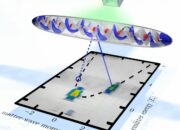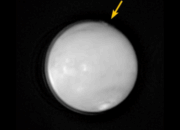Silicon photonics, an interdisciplinary field that fuses the realms of semiconductor technology and optical communications, is revolutionizing various sectors, not least of which is the automotive industry. As autonomous vehicles (AVs) continue to evolve, the integration of silicon photonics presents groundbreaking opportunities for enhancing their operational capabilities. The following discourse elucidates the diverse applications of silicon photonics in autonomous vehicles, the underlying technological principles, and the ramifications for future development.
1. Enhanced Lidar Systems
A pivotal application of silicon photonics in autonomous vehicles is in the development of Light Detection and Ranging (Lidar) systems. These systems utilize laser pulses to create intricate three-dimensional maps of the environment. Silicon-based photonic integrated circuits (PICs) are increasingly being employed to miniaturize Lidar components. Traditional Lidar systems, typically bulky and expensive, are being augmented with silicon photonics to produce more compact and cost-effective solutions.
This miniaturization leads to lighter weight sensors that can be effectively integrated into the vehicle’s architecture. Furthermore, advancements in silicon photonics allow for enhanced resolution and range of detection, significantly improving the vehicle’s ability to navigate through complex environments. Such high-resolution Lidar systems can detect pedestrians, obstacles, and road markings with far greater precision, thereby bolstering safety.
2. Advanced Communication Systems
Another salient application is in vehicular communication systems. Autonomous vehicles necessitate rapid, secure data exchanges amongst themselves (V2V) and with roadway infrastructure (V2I). Silicon photonics plays a crucial role in facilitating high-speed optical data transmission that far exceeds traditional electronic communication bandwidths.
Utilizing optical transceivers based on silicon photonics, vehicles can communicate vast amounts of information in real-time. This includes sensor data, traffic conditions, and environmental information. Such prompt communication is indispensable for efficient operation in crowded urban settings, where data from multiple sources must be rapidly assimilated to make informed driving decisions.
3. On-Chip Sensors and Connectivity
Silicon photonics also enables the integration of on-chip sensors that are fundamental for monitoring various vehicular parameters. Temperature, acceleration, and pressure sensors can be fabricated on silicon wafers using photonic techniques, allowing for a substantial reduction in component size while enhancing performance.
Through this integration, real-time monitoring of vehicle systems is made more feasible, leading to improved reliability and safety. Additionally, these sensors can work in conjunction with the vehicle’s decision-making algorithms to provide crucial feedback loops, ensuring that the vehicle can react in a timely manner to dynamic driving scenarios.
4. High-Performance Computing Systems
The computational needs of autonomous vehicles are immense. They necessitate the processing of extensive data from multiple sources, including cameras, radar, and Lidar systems. Silicon photonics paves the way for high-performance computing (HPC) solutions. The inherent advantages of silicon-based optical interconnects allow for enormous data throughput with minimal latency.
By employing silicon photonic circuits, the vehicle’s central processing unit can efficiently process information without succumbing to bottleneck issues typically faced in traditional electronic systems. The ability to handle vast datasets seamlessly is imperative for the effective operation of advanced algorithms that govern navigation, obstacle detection, and path planning.
5. Energy Efficiency and Sustainability
One of the most compelling advantages of silicon photonics is its energy efficiency compared to traditional electronic systems. As autonomous vehicles transition to increasingly complex operational frameworks, the demand for energy-efficient solutions will only escalate. Silicon photonics provides an avenue for reducing power consumption while maintaining high performance. This is particularly essential when considering the sustainability of future automotive technologies.
Moreover, the reduction in size and weight of components due to silicon photonics can contribute to lighter vehicles, leading to reduced energy consumption overall. This not only aligns with current environmental goals but also enhances the practicality of electric autonomous vehicles—the future of sustainable transport.
6. Integration with Artificial Intelligence
The synergy between silicon photonics and artificial intelligence (AI) is poised to redefine autonomous vehicle capabilities. AI algorithms depend heavily on the processing of rich datasets, especially those derived from photonic sensors. The rapid data handling facilitated by silicon photonic technology can optimize AI training processes, allowing for real-time learning and adaptation.
Furthermore, machine learning frameworks can directly benefit from the high-speed interconnects provided by silicon photonics, enabling more effective computation models that can evolve as vehicles encounter diverse driving conditions. Thus, the nexus of silicon photonics and AI not only enhances operational effectiveness but also propels the advancement of fully autonomous systems.
7. Future Outlook and Challenges
As the automotive sector continues its trajectory towards full autonomy, the integration of silicon photonics represents a promising frontier. However, challenges persist. Issues surrounding the scalability of manufacturing techniques, reliability of photonic devices under various environmental conditions, and regulatory standards must be diligently addressed to maximize the potential of this technology.
The prospect of silicon photonics enhancing autonomous vehicle performance is not merely theoretical. Its ongoing development could yield transformative advancements in how vehicles perceive and interact with their surroundings. In summary, silicon photonics stands at the nexus of innovation, offering the potential to augment the safety, efficiency, and reliability of autonomous vehicles while also contributing positively to broader societal goals of sustainability and reduced carbon emissions.



